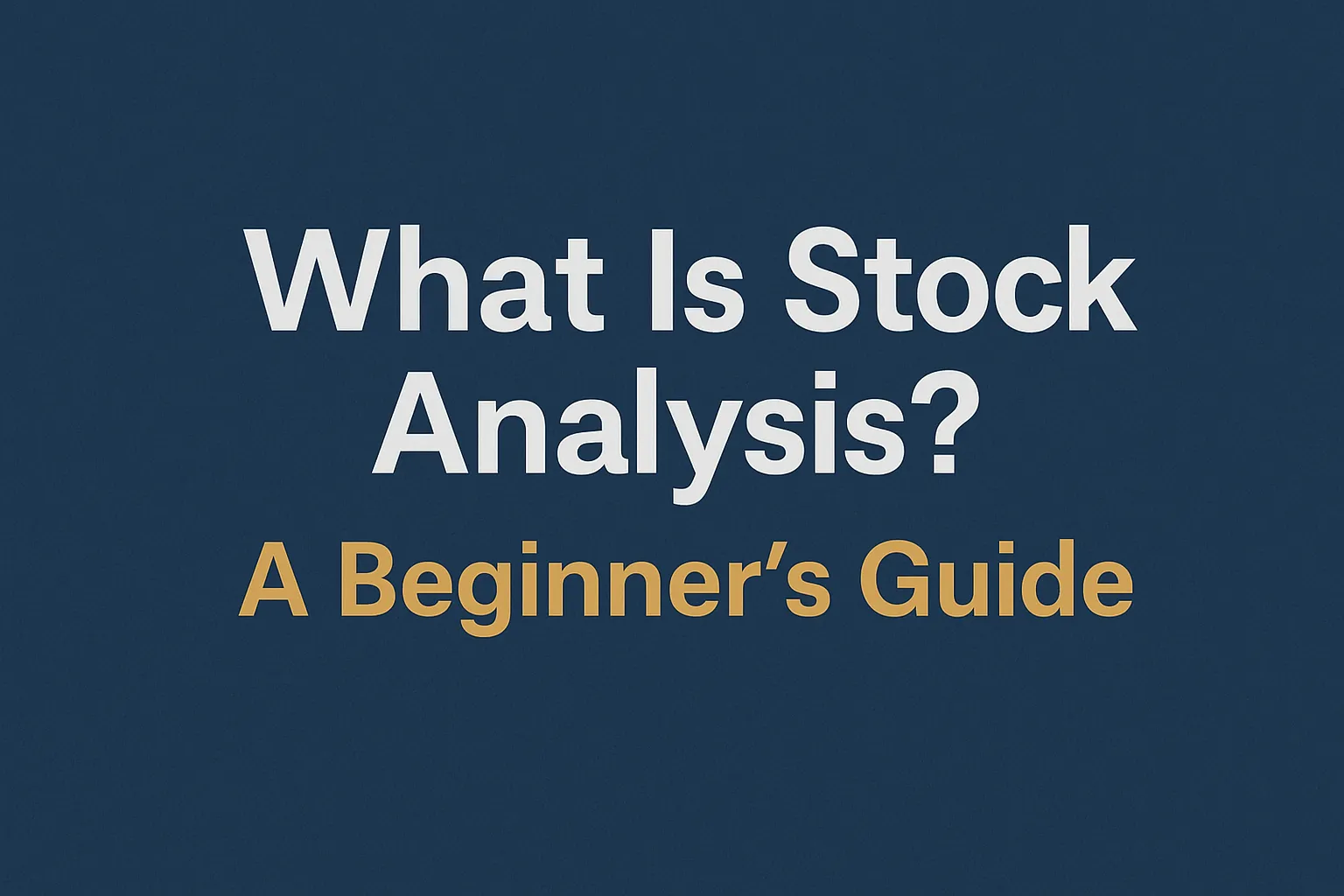What Is Stock Analysis? A Beginner’s Guide
Stock analysis is the foundation of smart investing. Whether you’re buying your first stock or building a diversified portfolio, knowing how to analyze stocks can help you make better decisions and avoid unnecessary risks.
In this beginner’s guide, we’ll break down what stock analysis is, the two main types, and how you can get started in 2025—even with zero prior experience.
What Is Stock Analysis?
Stock analysis is the process of evaluating a company’s performance, financial health, and potential for future growth to decide whether its stock is worth buying, holding, or selling.
It helps investors:
- Understand what drives a company’s value
- Make informed investment decisions
- Identify opportunities and avoid bad trades
Types of Stock Analysis
There are two main types of stock analysis: fundamental analysis and technical analysis. Each serves a different purpose and suits different investing styles.
1. Fundamental Analysis
This approach focuses on evaluating the financial and business fundamentals of a company to determine its intrinsic value.
Key elements include:
- Revenue, profit, and earnings growth
- Balance sheet strength (assets vs. liabilities)
- Industry position and competitive advantage
- Valuation metrics like P/E, PEG, and P/B ratios
- Management quality and future outlook
Best for: Long-term investors and value-focused investors
2. Technical Analysis
This method studies price charts and trading volume to identify patterns, trends, and potential entry/exit points.
Key tools include:
- Candlestick patterns
- Moving averages (SMA, EMA)
- RSI, MACD, Bollinger Bands
- Support and resistance levels
Best for: Traders and short- to mid-term investors
Why Is Stock Analysis Important?
Without analysis, investing becomes gambling. Proper stock analysis helps you:
- Avoid overvalued or risky stocks
- Understand market timing better
- Build a diversified, high-quality portfolio
- Make decisions based on data, not emotions
How Beginners Can Start Analyzing Stocks
- Pick a Stock You Understand
Start with a company whose products or services you use regularly. - Check Financial Health
Use sites like Yahoo Finance or Simply Wall St to review revenue, net income, and balance sheet. - Compare with Competitors
Look at valuation metrics like P/E and EPS vs. other stocks in the same industry. - Review News and Trends
Check recent news, earnings reports, and industry trends that could impact performance. - Track the Chart (Optional)
Use TradingView or Google Finance to look at price movement, support levels, and general trend.
Best Tools for Stock Analysis (Free & Beginner-Friendly)
- Yahoo Finance – Basic financials and charts
- TradingView – Charting and technical indicators
- Finviz – Screeners and visual summaries
- Simply Wall St – Infographic-style stock analysis
- MarketWatch – News and company profiles
Conclusion
Stock analysis isn’t just for professionals. As a beginner, learning to analyze stocks puts you in control of your financial future. Whether you use fundamental metrics or simple charts, consistent analysis helps you make smarter decisions over time.
Start small, stay curious, and keep improving your understanding—your portfolio will thank you.
FAQs
1. Do I need both fundamental and technical analysis?
It depends. Long-term investors focus on fundamentals, while traders often use technicals. Many use both together.
2. Is stock analysis hard to learn?
Not at all. Start with simple metrics and tools—practice improves confidence.
3. Can I analyze stocks with free tools?
Yes. Many excellent platforms offer free stock research, including Yahoo Finance, TradingView, and Finviz.
4. How often should I analyze a stock?
Review your holdings quarterly or when major news affects the company.
5. What’s the most important thing in stock analysis?
Understanding the business and not overpaying for a stock’s potential.


